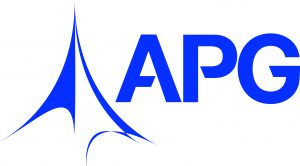 The nondescript title of this presentation, repeated as the headline above, does no justice to its compelling content. A simple “Aaron Frost” would have told you much more. Yes, Frost was back in front of the 7F group sharing his encyclopedic knowledge of metallurgy, repair experiences on selected hot-section components, and views on the promise of additive manufacturing for new parts and for the rehabilitation of old.
The nondescript title of this presentation, repeated as the headline above, does no justice to its compelling content. A simple “Aaron Frost” would have told you much more. Yes, Frost was back in front of the 7F group sharing his encyclopedic knowledge of metallurgy, repair experiences on selected hot-section components, and views on the promise of additive manufacturing for new parts and for the rehabilitation of old.
Frost was the second of APG’s (Allied Power Group) three participants in the company’s hour-long session, speaking for three-quarters of that time. If you missed the presentation and have responsibility for the repair of hot parts for 7F engines, or simply want to add to your knowledge, access the video on the Power Users website; you’ll be glad you did.
 Jeremy Clifton, VP sales and marketing, introduces APG and its recent acquisitions to attendees. Marty Magby, VP business development, follows Frost with an outline of how the company implements engine and plant overhauls to meet customer expectations.
Jeremy Clifton, VP sales and marketing, introduces APG and its recent acquisitions to attendees. Marty Magby, VP business development, follows Frost with an outline of how the company implements engine and plant overhauls to meet customer expectations.
Frost begins with a review of APG’s experience in repairing more than 100 sets of first-stage shroud blocks for the 7FA.03, illustrating some of the enhancements the company has made to extend parts lifetime and improve performance. One example he gave is to add full NiCrAlY side-face coatings on shroud blocks to prevent the oxidation uncoated tiles often experienced after only one service interval. Such oxidation was known to create gaps between adjacent tiles and provide a pathway for seals to go downstream and do damage.
Another enhancement is forward outer block shroud hook recovery which involves machining off the crack-prone original Type 310 stainless steel material and restoring the hook with Hastelloy S weld material followed by finish machining.
Final steps in the restoration of shroud blocks included dimensional checks, finish grinding, and application of a bond coat and a high-density thermal barrier coating on the tile face.
In concluding this portion of his presentation, Frost provides details on the repair of first-stage shroud blocks for the 7FA.04, illustrating how the company’s experience described above for the 7FA.03 qualified it to make Dot 04 repairs as well.
Frost links the shroud-block repair and additive manufacturing (AM) segments of his presentation, announcing that APG had successfully developed and printed a 3D 7FA.03 first-stage shroud tile. He is bullish on the future of AM for making critical gas-turbine parts but believes it will be years before it can be applied to mainstream production. An example he gave was that a single 3D tile for a 7FA.03 today takes about a day to make. Also, that commercial AM production equipment is incapable of making large parts—transition pieces, for example.
The big near-term advantage of 3D printing, Frost continues, is that single parts—such as shroud-block tiles—can be made and replaced, avoiding the need to purchase an entire row. Another advantage is that it’s possible to “print” the damaged section of a given part—second-stage nozzle, for example—and weld it into the original. Plus, the portion being replaced can be made with an improved combination of material, design, and coating changes such that the repair is better than a traditional weld or braze repair.
The final segment of Frost’s presentation discusses what he believes are design improvements to the OEM’s third-stage bucket which can extend the lifetime of these parts. He says that AGP has repaired 30 sets of third-stage buckets without a post-repair issue. Attendees were referred to GE Technical Information Letters 2006-R1 (for the 7FA.03) and 2045 (for the 7FA.04) issued relative to third-stage bucket failure potential.
One of AGP’s improvements is replacing the double-rail on original third-stage buckets with a single rail to reduce weight. Experience has shown this change can extend bucket lifetime from one HGP cycle to two. Also important to extending bucket life is AGP’s tight temperature control during heat treatment and a special fixture that allows vertical orientation of the buckets in the oven to maintain bucket integrity.


